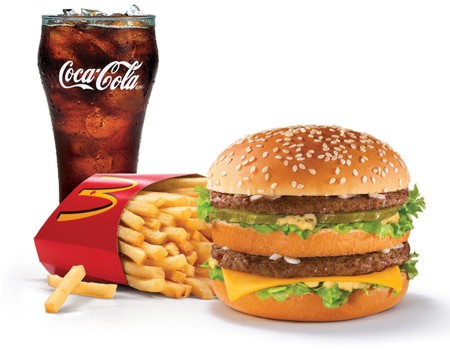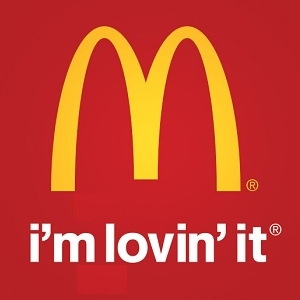Sounds funny, on the face of it, to suggest that the retail price of a ubiquitous Fast Food menu item could prove an effective comparator to gauge the relative strength or weakness of a country’s economy. But the global footprint of a foodservice behemoth like McDonald’s makes it possible…
 A classic Big Mac Meal: The low-profit Burger helps sell the high-profit Fries and Beverage.
A classic Big Mac Meal: The low-profit Burger helps sell the high-profit Fries and Beverage.
You can find a McDonald’s in virtually every country in the world that has an urban infrastructure to support it. And at the McDonald’s, you’ll find, literally, a world of regional specialty menu items. But one you’ll find everywhere is the iconic Big Mac.
Realizing this, Expensivity.com – a think tank whose aim is to ‘teach people about money’ – went to the trouble to find out what a Big Mac costs in every country. And the differences in price tell a fascinating tale about each country’s economy, culture and food security.
An exercise in extremes
First of all, the Expensivity survey revealed that a Big Mac costs the equivalent of (US)$21.89 in Lebannon, but only $1.94 in Russia. How can this be? Depends on a whole list of conditions contributing to the cost of making the burger: staff wages, taxes, electricity prices, ingredient prices, insurance, license and permit fees – and many more.
By comparison, a BM costs $4.89 in Canada and $5.19 in the U.S.
Social conditions and customs reflected
A BM costs $10.89 in the Netherlands, while it sells in other Western European countries in a relatively narrow range between from around $5.00 up to around $8.00. Social conditions and cultural norms play a big role in retail pricing.
For example, the Expensivity ‘executive summary’ states: “Eating out in the Netherlands is expensive because Dutch tastes are simple and eating at home is cheap – encouraging a bigger divide between home meal[s] and restaurant culture.”
Expensivity also surveyed the global prices of a Large order of Fries and an average Adult Meal (burger, fries and drink).
The Fries enigma
There’s an old maxim that states: “Potatoes are the cheapest starch you can put on a plate.” Compared to the cost of other ingredients that make up the ‘standard’ Burger-based Fast Food meal, Fries are still pretty cheap. But the price of a Large McDonald’s Fry varies without apparent logic around the world.
In some places where potatoes are not a big part of the food culture, a Large order of Fries costs less than it does in the U.S., Canada and Western Europe. Potatoes are a starch staple in those regions, and billions of them are grown every year. They should be cheaper than in, say, Fiji ($2.63), Egypt ($1.62), or Turkey ($0.93). Now brace for collision: The price of a Large Fry in The U.S. is $3.19, and in Canada, it’s $3.26. Why?
It’s strictly business. Next to coffee and fountain drinks, Fries offer a McDonald’s operator the highest profit margin on the menu. So they pump up the retail price to the level the market will bear, to make back some of the money they ‘lose’ on other menu items with margins as thin as 5 percent.
About the coffee and fountain drinks…
They cost just a few cents per serving to make, and are sold at prices ten times that or more. Often, the cup they come in costs more than the contents. Now you know why many restaurants offer free refills. You’d have to drink ten refills to erase the built-in profit margin. And from a promotional and marketing perspective, what a great sounding offer!
So…
You have to take into account a whole encyclopedia of variables to understand why McDonald’s menu items cost what they do in various countries. But just looking at the Expensivity price maps for Big Macs, Fries and Adult Meals gives you a good idea of how much (or how little) McFood is honoured and valued around the world!
~ Maggie J.

